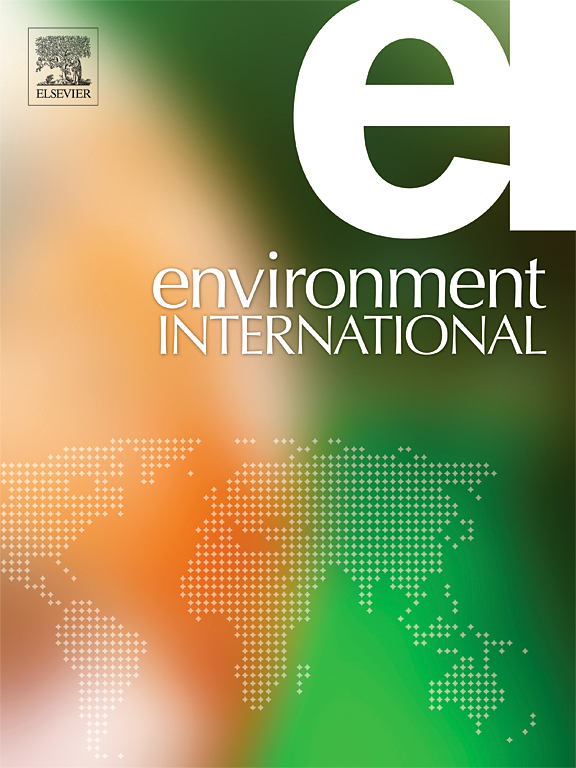Adherence to the 3+30+300 urban green space rule and mental health, physical activity, and overweight: A population-based study in the Netherlands
IF 10.3
1区 环境科学与生态学
Q1 ENVIRONMENTAL SCIENCES
引用次数: 0
Abstract
Background
The 3+30+300 guideline aims to establish a standard for healthier cities to enhance population health through the provision of trees and green space; however, little empirical evidence to support its effectiveness is available.
Objectives
We aimed to 1) evaluate the adherence to the 3+30+300 urban green space rule in the Netherlands; 2) examine the associations between the 3+30+300 rule (and its components) and adults’ health and behavioral outcomes; and 3) assess possible effect modifications by age, sex, income, and urbanicity.
Methods
We used population-based health survey data for 2022 from the Netherlands. Adults’ general health, psychological complaints, anxiety and depression symptoms, psychological resilience, physical activity, and overweight were assessed alongside the 3+30+300 rule at the residential addresses. Covariate-adjusted mixed effects logistic regressions estimated the associations of health and behavioral outcomes with the 3+30+300 components—individually and jointly. Subgroup analyses based on age, sex, income, and urbanicity were also conducted.
Results
Of the 180,949 respondents, 16.4 % met the 3+30+300 rule. Respondents meeting the 3+30+300 rule were significantly less likely to be overweight and were significantly more likely to be physically active than those not meeting the rule. Neither meeting the 3+30+300 rule nor its components showed any association with other health or behavioral outcomes. We found no notable effect modification by age, sex, income, and urbanicity.
Conclusions
Our findings suggest that meeting the 3+30+300 green space rule may promote certain health benefits, particularly by supporting better weight management and higher physical activity levels, though its role in mental health remains inconclusive.


遵守3 + 30 + 300城市绿地规则与心理健康、身体活动和超重:荷兰一项基于人群的研究
3 + 30 + 300指南旨在建立健康城市的标准,通过提供树木和绿地来提高人口健康;然而,很少有经验证据支持其有效性。目的:1)评估荷兰3 + 30 + 300城市绿地规则的遵守情况;2)检验3 + 30 + 300规则(及其组成部分)与成人健康和行为结果之间的关系;3)评估不同年龄、性别、收入和城市化程度可能产生的影响。方法采用荷兰2022年人口健康调查数据。根据居住地址的3 + 30 + 300规则,对成年人的一般健康状况、心理不适、焦虑和抑郁症状、心理弹性、身体活动和超重进行评估。协变量调整后的混合效应logistic回归估计健康和行为结果的关联有3个 + 30个 + 300个组成部分——单独的和共同的。还进行了基于年龄、性别、收入和城市化程度的亚组分析。结果在180,949名受访者中,16.4 %符合3 + 30 + 300规则。符合3 + 30 + 300规则的受访者比不符合规则的人更不容易超重,更有可能进行体育锻炼。符合3 + 30 + 300规则及其组成部分均未显示与其他健康或行为结果有任何关联。我们没有发现年龄、性别、收入和城市化的显著影响。我们的研究结果表明,满足3 + 30 + 300绿色空间规则可能会促进一定的健康益处,特别是通过支持更好的体重管理和更高的身体活动水平,尽管其对心理健康的作用尚不确定。
本文章由计算机程序翻译,如有差异,请以英文原文为准。
求助全文
约1分钟内获得全文
求助全文
来源期刊

Environment International
环境科学-环境科学
CiteScore
21.90
自引率
3.40%
发文量
734
审稿时长
2.8 months
期刊介绍:
Environmental Health publishes manuscripts focusing on critical aspects of environmental and occupational medicine, including studies in toxicology and epidemiology, to illuminate the human health implications of exposure to environmental hazards. The journal adopts an open-access model and practices open peer review.
It caters to scientists and practitioners across all environmental science domains, directly or indirectly impacting human health and well-being. With a commitment to enhancing the prevention of environmentally-related health risks, Environmental Health serves as a public health journal for the community and scientists engaged in matters of public health significance concerning the environment.
 求助内容:
求助内容: 应助结果提醒方式:
应助结果提醒方式:


